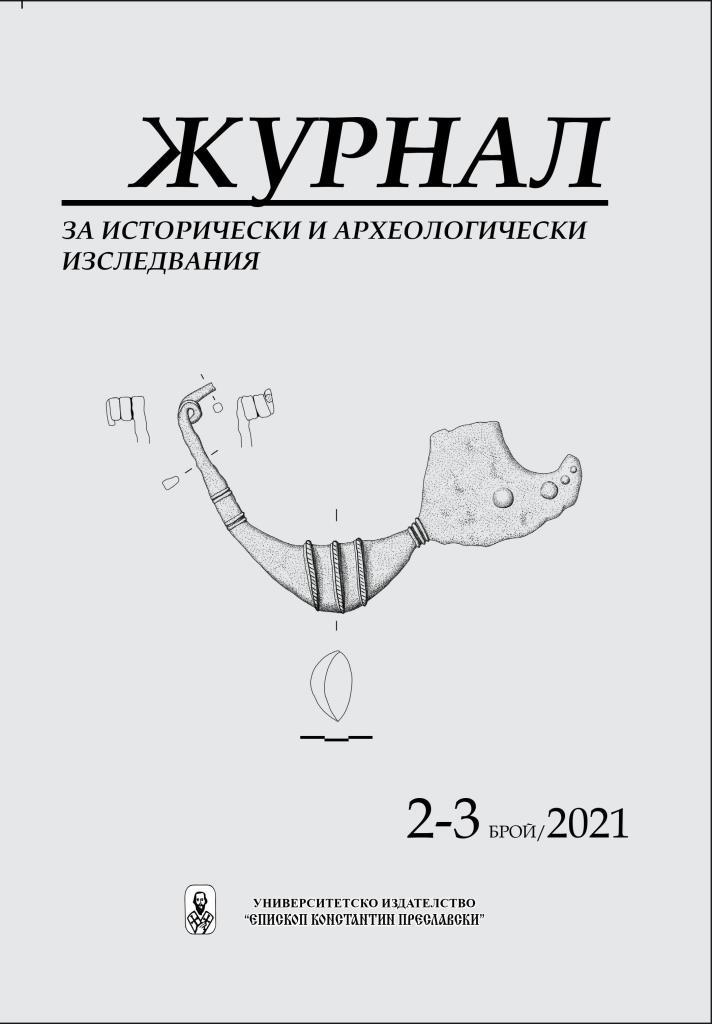Бронзова фибула от ранната желязна епоха от с. Градево, Югозападна България
Bronze Fibula from the Early Iron Age from Gradevo Village, Southwestern Bulgaria
Author(s): Ivo KaradzhinovSubject(s): History, Archaeology, Ancient World
Published by: Шуменски университет »Епископ Константин Преславски«
Keywords: bronze fibula; Early Iron Age; Ancient Thrace; Southwestern Bulgaria; archaeometric analysis
Summary/Abstract: The paper discusses a bronze fibula (Fig. 1-1) found out of context in the area of Gradevo village (Fig. 2-1). It belongs to type AII3 – variant β according to Diana Gergova’s classification dated to the 8th–7th century BC. It is characterized by a single spiral, asymmetric profile, arched bow, and a rectangular plate with a horn-shaped ending. The bow has an oval cross section, and decoration of three vertical ribs with incised lines. The upper part of the plate is ornamented with bosses. The object is substantial, with relatively large dimensions (preserved length: 17 cm; weight: 120 g). During the second half of the Early Iron Age this fibula type was a popular element of the traditional costume in Ancient Thrace. The closest parallels in both geographical and typological context come from the Western Rhodope Mountains (Fig. 1, 2–9; Fig. 2, 2–6). Exemplars with a similar morphology and decoration are located in various regions of the Aegean. They are one of the typical representatives of the so-called Early Iron fibula koiné that also includes Inner Thrace (Fig. 1-11–14). To determine the elemental composition of the bronze alloy the fibula was subjected to archaeometric examination by the method of X-ray fluorescence analysis (copper: 81,405%; tin: 17,827%; arsenic: 0,334%; lead: 0,323%; cobalt: 0,111%). The obtained results show that the basic components from which the alloy was formed are the elements copper and tin. The low reported values of arsenic and lead are an indication that they were not deliberately introduced but present in the form of natural impurities. The comparatively high tin content (17.8%) is notable, as this percentage is rare among the fibulae from the Early Iron Thrace which have been studied thus far.
Journal: Журнал за исторически и археологически изследвания
- Issue Year: 2021
- Issue No: 2-3
- Page Range: 7-19
- Page Count: 13
- Language: Bulgarian

